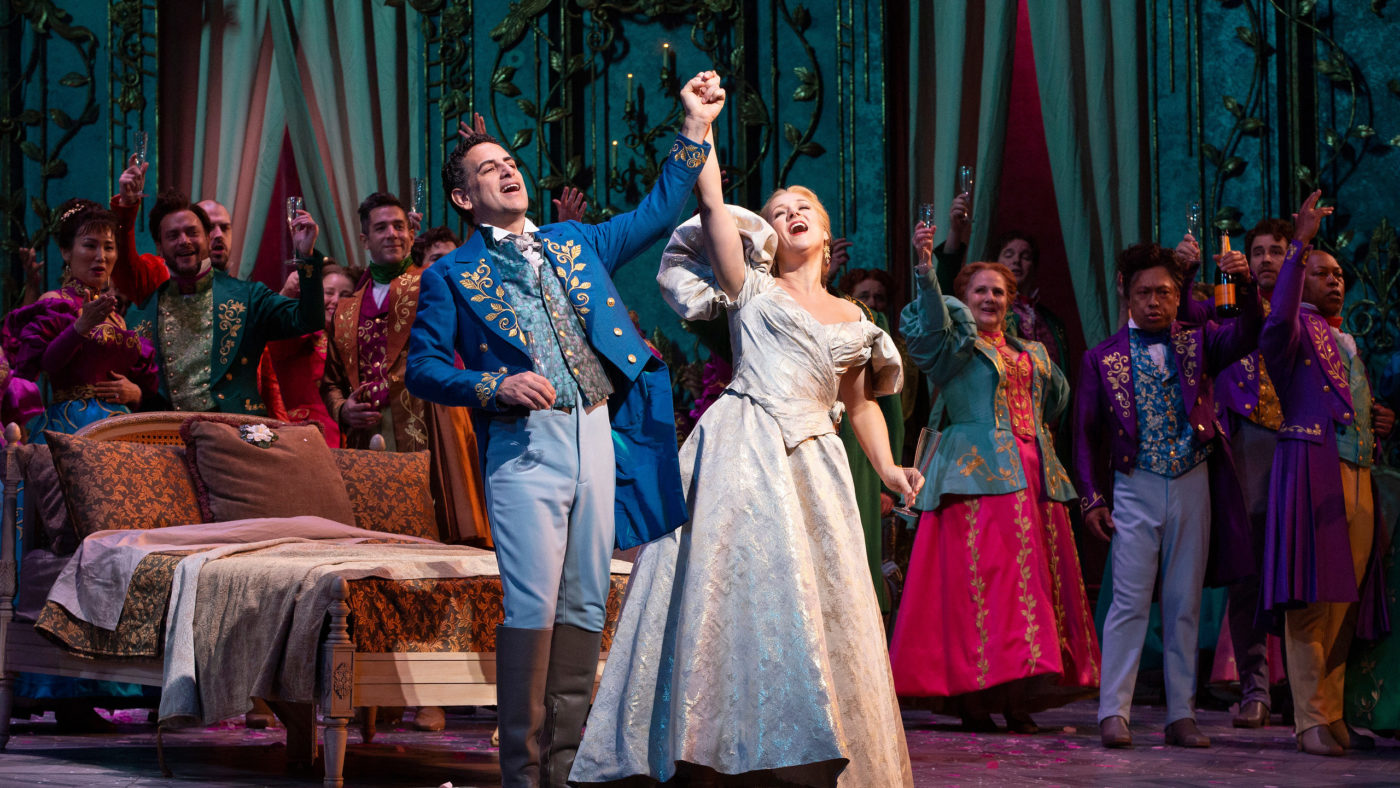

In a controversial touch, Mr Decker has dressed even Flora and the other female party-goers in men’s clothes, emphasizing Violetta’s role as the courtesan.

She is a spunky delight during Act I, twirling among the chorus, all wearing suits. Ms Dessay is at her best in this role, oscillating easily between flirtation and frantic distress. Mr Decker has taken the dismal themes of the story and transfigured them into stark and stunning visuals: minimal and at times heavy-handed, but powerful nonetheless.Īs the prelude continues, the ailing courtesan Violetta, portrayed by soprano Natalie Dessay in this 2012 reprisal at the Met, staggers in and kicks off her shoes, which are bright red to match her knee-length dress. Sitting silently below the clock is an ominous-looking man who, the viewer gradually discovers, is meant to represent Death. Its sleek black hands count down to some unknown destiny. During the prelude, the familiar opening chords of one of Verdi’s most well-known and well-loved operas waft over the stage, which hosts only a white bench lining a semi-circular white backdrop, as well as an enormous clock on the right side. In Mr Decker’s opening, the stage is almost bare. And the universal aspect has not been sacrificed: the story and its characters seem as timeless as ever. However, with Willy Decker’s striking production, the characters seem modern, imminent, relatable, just as Verdi intended.

The story remained timeless, even if the context did not. However, Verdi was told that he would have to push back the setting over a hundred years, to the early 18th century, so as not to provoke any controversy. He based his 1853 opera on the French play La Dame aux Camélias, which had premiered only a year before. La Traviata, the story of “the fallen woman” and her lover Alfredo, was intended by Verdi to be “a subject for our own age”, though he was impeded in this goal by the censorship of the time.


 0 kommentar(er)
0 kommentar(er)
